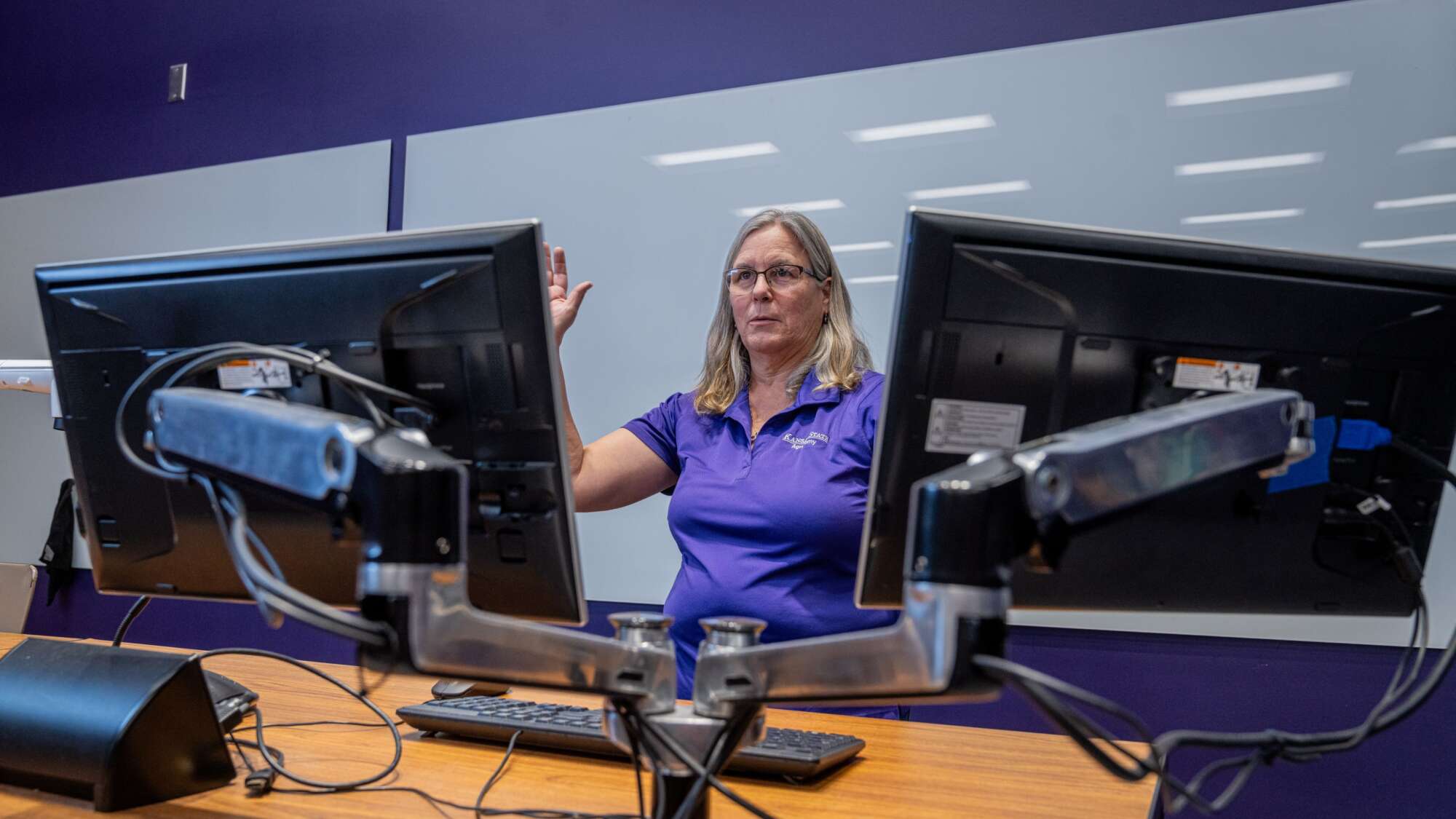Leveled-up learning spaces fuel new teaching methods.
A classroom is a classroom is a classroom, right? Wrong. In the modern academic landscape, antiquated learning spaces struggle to keep pace.
K-State’s new and renovated classrooms are equipped with interactive technology that streamlines the delivery and sharing of information. They’re comfortable and designed to maximize collaboration and minimize distractions. And most importantly, they help us show prospective students and faculty that K-State is a place where great things are possible.
The Flip This Classroom initiative aims to expand that advantage by renovating 67 of the university’s most-used and most-outdated classrooms. With $4.1 million of the $7-million goal raised, nine classrooms have already been flipped to facilitate the latest teaching trends in higher education. Six classrooms are under construction, and 12 are being prepped to begin the process.
Anita Dille, professor of weed ecology and assistant head of teaching in the Department of Agronomy, lectures in both new and old spaces. Her experience confirms that making K-State classrooms a priority is key.
What contemporary classroom features are must-haves?
Today’s students need to be able to plug in. Now they bring in laptops, tablets or other devices, and the updated classrooms have power sources throughout and expanded Wi-Fi service.
Renovated rooms have also replaced dusty chalkboards with glass or whiteboards. Teachers can project onto those whiteboards and interact dynamically with the materials by marking on the projected image, such as adding context to a graph or filling in blanks. Classrooms with some of these newer technologies just allow us to try some innovative approaches.
Technology is a must-have because it allows us to do a better job of teaching, as well as meet the needs of students who aren’t on site. We’re able to offer instruction in several additional formats, through distance learning or options to attend virtually.
Are college classrooms changing in other fundamental ways?
For a lot of people, when they think of a university education, the typical image that comes to mind is that of the big lecture hall containing all those individual chairs with a little bit of space to write on.
But that’s not enough now with the way that students interact with their materials. They’re there with their computer, and they need more space.
Redesigns tend to shift more to tables, versus permanently mounted desks, in some of our smaller rooms. We can move them around and have students congregate in small groups and then move back into the typical lecture style. That’s especially helpful for discussions or guest speakers.
What’s the bottom line?
As today’s students arrive, ready to prepare for an ultracompetitive job market, they expect to learn in creative ways. It’s more than finding a seat in a dimly lit lecture hall and taking notes. We can use classrooms for more — a more active and flexible learning experience.
Join the effort
Help us continue the progress!



